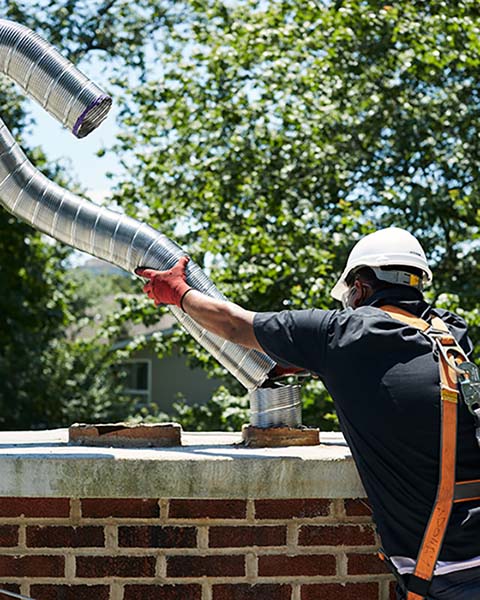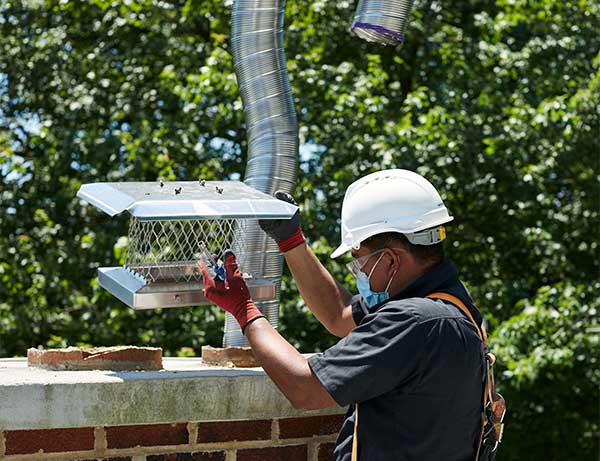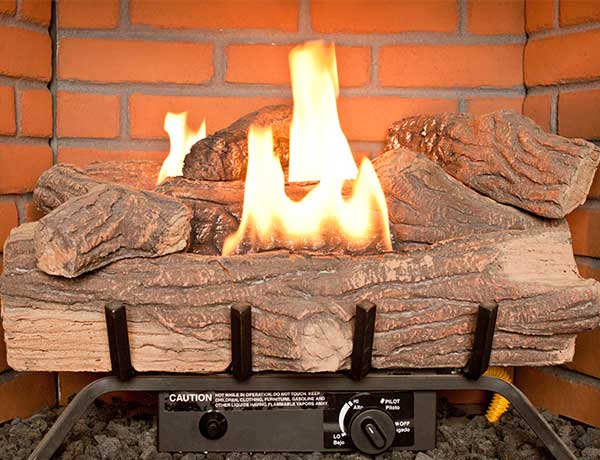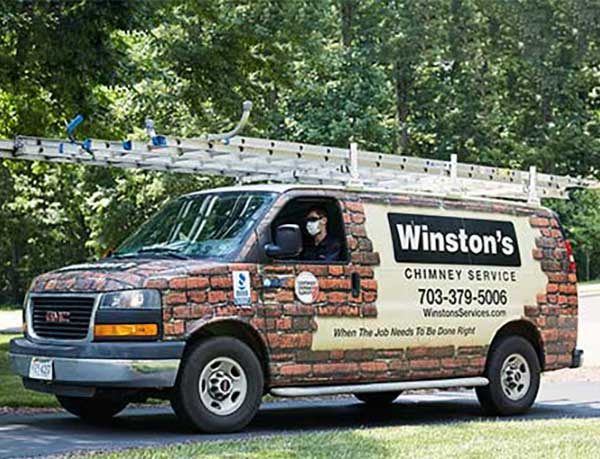Chimney Liners: An Important Piece of Your Chimney’s Anatomy
When it comes to home maintenance and repairs, you may know that scheduling services and repairs for your chimney is a necessity, rather than an option. This can be a daunting process for homeowners, as they navigate the potential costs of hiring professionals, while also trying to understand what exactly needs to be done.
Well, one important part of this puzzle is addressing your chimney liner – which entails understanding its purpose, knowing what materials it’s made from, which considerations to make when shopping around for a new one, and more.
Worried you’re going to make the wrong move somewhere along the line? Don’t stress. Any time our Chimney Safety Institute of America (CSIA)-certified technicians perform a chimney inspection, we look closely at the condition of the chimney flue liner to ensure it’s in good shape. And if you need repairs or a replacement, we can help you navigate that process too. If you’re in the Northern VA area, Winston’s is the team to rely on for it all.
What Is a Chimney Liner? And What Is the Purpose of a Chimney Liner?
Chimney liners are typically made from clay or metal, and they run down the interior of a chimney system. Now, it’s clear that these components are very important in any home with a fireplace or oil-fueled furnaces. …but what exactly do they do?
Well, liners are known for serving three important purposes:
- They protect your home from heat exposure and possible fire damage.
- They ensure that all combustible gases exit the fireplace safely – and don’t circle back into your home.
- They help ensure proper airflow, so your fireplace can function as efficiently as possible.
As you might imagine, any breaks or openings in the chimney liner can lead to serious problems, all of which put your home and system at risk. That’s why addressing any issues promptly is always a must.
Is Your Chimney Liner Damaged or Missing?
Cracks or deterioration throughout your flue liner can affect the way your system performs. Think of your flue system like a straw, with the gases being pulled up and out of the system from the bottom up. If the flue has cracks, breaks in the liner, or missing mortar joints, it will not perform as intended – similar to drinking out of a straw with holes in it.
So, what should be done?
Relining your fireplace, wood stove, furnace, or water heater flue with stainless steel liner is the most common method used to repair a damaged or deteriorated chimney flue. We also find that, in some of the older fireplaces we work, a liner was never installed in the first place – and this needs to be corrected as quickly as possible for safety and to bring the chimney up to the current standards and codes.
When a new furnace, boiler, or water heater is installed, this is another case where a new liner may be needed to ensure everything is sized correctly to the new appliance. Sizing is more important than people realize. As the flue gases rise, they cool and condense – and if the flue/liner is too large, the gases may not vent properly.
Would HeatShield® be a good option for you?
If you have a clay or terracotta liner, you might be able to use HeatShield® for relining, which could allow you to restore it in an effective, yet more affordable, way. We are one of the most experienced companies when it comes to applying any of HeatShield®’s three relining methods.
That said, as with all fireplace and chimney-related services, our technicians are certified, trained, and experienced in all types of chimney liner replacements. Contact us today and give us a chance to wow you.
When Should I Consider Getting a New Chimney Liner?
According to data from the National Fire Protection Association (NFPA), in 2019, more than 25,000 home structure fires were caused by chimneys and fireplaces, which resulted in $349 million in property damage across the US alone.
Chimney liners play a crucial role in protecting your home from potential fire hazards. They keep superheated gases and smoke exhaust away from vulnerable walls and attic spaces, and help to ensure that flue gases vent out properly from the furnace, fireplace, or wood/coal stove.
Without chimney liners, there’s an increased risk of accumulated creosote within the chimney stack as well, which can wreak corrosive havoc on your masonry components and potentially cause a chimney fire.
With all of this in mind, if a certified technician has inspected your system and recommends a liner repair or replacement, this isn’t something to ignore.
Will a New Chimney Liner Increase My System’s Efficiency?
You bet – in fact, installing a new chimney liner is one of the most effective ways to increase chimney and fireplace efficiency.
Why is this? Well, liners provide extra insulation for your exhaust gases as they travel up the flue. This allows them to stay heated longer, and it also reduces soot and creosote accumulation in the process. All of this means that, with a properly installed chimney liner in place, you’ll get more heat, better performance, and better airflow – all of which comes down to a boost in efficiency.
This also means you won’t have to rely on high-temperature settings as much, which helps you save on energy – while still keeping your home cozy and comfortable in the process.
Are There Different Types of Chimney Liners?
When selecting a chimney liner, you’ll typically have a few options, including metal, clay tile, cast-in-place liners, and pre-fabricated metal liners.
- Metal liners are usually aluminum or stainless steel, both chosen for their corrosion-resistant characteristics.
- Clay tile is a popular option that allows the insulation of hot gases inside the chimney.
- Cast-in-place liners are more permanent and installed using refractory cement.
- Prefabricated metal liners come in several different materials such as 316Ti stainless steel alloy or 304 stainless steel.
All of these liner types offer protection to chimneys and keep combustible materials away from heat sources, while ensuring the efficient release of smoke and noxious gases. That said, they do have distinct differences making certain types better suited for specific appliance types and fuels.
What are the pros and cons of clay chimney liners?
Many homes in the Northern VA, Washington, DC, and Maryland areas have clay tile liners These are an effective and efficient way to ensure your chimney’s flue gases are released safely – without risking noxious fumes entering your home in the process.
They are primarily constructed from durable clay tiles, which are further secured with a refractory cement layer and can form part of most chimney constructions. However, there are both pros and cons to using clay tile liners that should be taken into consideration.
One of the advantages is that they provide excellent protection from heat damage due to their thermal-resistant properties. This makes them quite long-lasting too.
At the same time, one disadvantage is that they require frequent maintenance or they may start to break down due to fire exposure or acidic condensation and damaging agents – particularly in areas with cold winters.
There is also a great way to repair clay liners called Heatshield® that works in most situations. However, if the damage is too far gone on clay tiles, we do recommend stainless steel liners.
What are the pros and cons of metal chimney liners?
Different types of metal liners will offer varied results.
- An aluminum liner is used only for gas appliances, and it is thinner than other materials. While this makes it cheaper and easier to maneuver, it also means it’s more prone to damage from rough or sharp objects.
- Stainless steel liners, on the other hand, are thicker and more durable. That said, they are typically more expensive than other materials. Most deem their reliability, corrosion-resistance, and lifetime warranty well worth the extra cost though.
Whether you choose aluminum or steel, having a metal chimney liner in place has its advantages. Metal liners tend to do better at resisting damage caused by the combustion process and heat than others due to their ability to maintain their structural integrity under intense temperatures.
On the downside, installation can be tricky when using preformed liners because they require exact fitting due to their limited adjustability. Ultimately, it is essential to choose not only a high-quality product that fits your budget, but one with proper integrity. And be sure to always trust a certified installer who will perform the task proficiently.
What is a cast-in-place chimney liner, and why would I choose that option?
Cast-in-place chimney liners are an effective and efficient way of relining a flue or chimney. They provide a quick and economical solution that involves inserting flexible, inflatable tubes made of a rubber compound into the existing clay tile liner. This method is well-suited for historic buildings, as it does not require a full masonry rebuild.
All that said, some of the drawbacks of these include possible water absorption during filling, if incorrectly applied. Ultimately, though, when a trusted professional does the job, cast-in-place chimney liners can offer homeowners a way to improve the safety and performance of their fireplace system.
What Are the Signs That I Need My Chimney Relined?
Over time, chimneys can suffer from wear and tear or damage due to harsh weather conditions, obstructions in the flue, or trauma to the bricks or mortar. It is important to recognize the signs that your chimney may need relining in order to prevent further damage, and to keep you and your family safer.
- Keep an eye for signs of deterioration, such as crookedness of the flue tile, crumbling brick or mortar, rusting dampers, cracked fireboxes, or smoke escaping from the walls.
- Water stains on the walls are also indicators that chimney relining could be needed, as water can saturate brickwork and create serious safety risks.
- It is essential to tackle any detected warning signs right away. If not treated timely, it could even lead to a house fire or carbon monoxide poisoning.
The best way to know for sure if your liner needs care is to call Winston’s Chimney Service up and schedule an appointment with one of our certified technicians. We’ll come out and conduct a chimney inspection to correctly assess the entire situation, then advise you on the next best steps for moving forward.
What Is the Chimney Relining Process Like?
If an inspection has revealed the need for a new liner, getting on the job soon is a must – and we’d suggest not using your fireplace in the meantime. That said, once the job is done, you can count on safer operation of the fireplace, stove, or heating system in your home.
Chimney relining involves installing a new liner inside the existing chimney, in an effort to make the lining safer, smoother, and more streamlined. This process should only be undertaken by a CSIA-certified technician, like the crew here at Winston’s Chimney Service, as it requires specific techniques, skills, and knowledge to do properly.
So, what’s the process like?
- The technician should have already inspected the chimney’s current condition, evaluated the type of fireplace or heating appliances used, and made sure the flue size is correct for the applicable situation.
- The tech will then select the appropriate type and length of liner.
- Afterward, the liner will be inserted up the flue opening, then be secured in place with a collar and either some mortar or a mortar-like sealing and insulating compound.
We always require a cap to be secured to the top of the chimney’s external surface for rain protection and to prevent debris or animals from entering inside – this also helps maintain the lifetime warranty.
What Should I Expect After the Chimney is Relined?
After the relining process is complete, you can expect improved ventilation and more efficient use of your fireplace or furnace. In addition, the new lining will protect against creosote buildup and heat being transferred inside the dwelling, allowing better chimney operations than before.
All in all, having a relined chimney is an effective way to maintain a safer and more comfortable home environment.
Keep in mind, though, regular maintenance of your chimney should not be overlooked for two reasons:
- First, most warranties require you to get annual chimney system inspections in order to keep them viable.
- Second, getting a new liner does not stop weather events or natural shifting from happening. Annual sweeping and inspections will help ensure your system stays in great working order.
Where Is the Best Place in Northern VA, Maryland, and DC to Get a Chimney Liner?
If you’re looking for a reliable and trustworthy chimney company to inspect your system, complete necessary chimney repair services, and see if you might need a new chimney liner, we’re here to help.
The team at Winston’s has decades of experience and has been working in the area since 1978. We maintain our commitment to training and keeping current with all certifications through the CSIA, and we follow all of the current safety protocols. We also strive to provide excellent customer service throughout the entire process, so homeowners can rest assured that their needs are taken care of.
Our customers rave about our work all across the area and we believe we are your best bet when it comes to getting a high-quality chimney liner. Give us a call or book online now to get started.
HeatShield® is a great relining option for certain chimneys. Our chimney and masonry repairs experts can tell you what you need to know.




